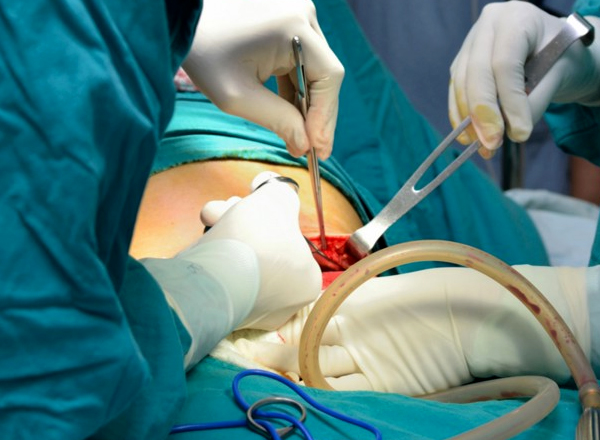
A Caesarean section, often referred to as a C-section, is a surgical procedure in which a baby is delivered through an incision made in the mother's abdomen and uterus. C-sections are performed for various medical reasons when a vaginal delivery is deemed unsafe or not possible. Here are key aspects of Caesarean sections:
-
Indications for C-section:
-
Fetal Distress: When monitoring indicates that the baby is not tolerating labor well.
-
Breech Presentation: If the baby is positioned feet or buttocks first rather than headfirst.
-
Cephalopelvic Disproportion (CPD): When the baby's head is too large to pass through the mother's pelvis.
-
Placenta Previa or Placental Abruption: Conditions where the placenta is covering the cervix or detaching from the uterine wall.
-
Previous C-section: In some cases, women who have had a previous C-section may opt for a planned repeat C-section.
-
Maternal Health Issues: Certain medical conditions, such as heart disease or active genital herpes, may warrant a C-section.
-
-
Planned (Elective) vs. Emergency C-section:
-
Planned C-section: Scheduled in advance due to known risk factors or a previous C-section.
-
Emergency C-section: Performed during labor if unexpected complications arise.
-
-
Preparation for Surgery:
-
The mother is typically administered regional anesthesia, such as an epidural or spinal block, to numb the lower half of the body while remaining awake.
-
A catheter is often inserted into the bladder to drain urine during the procedure.
-
-
Surgical Procedure:
-
An incision is made horizontally across the lower abdomen (transverse incision) or vertically from the navel to the pubic bone (vertical incision).
-
The abdominal muscles are separated, and a second incision is made in the uterus.
-
The baby is then delivered through the incisions.
-
-
Recovery:
-
Recovery time can vary, but most women can expect to stay in the hospital for a few days after the procedure.
-
Pain management is provided to control discomfort.
-
Movement and activity may be limited initially but gradually increase as healing progresses.
-
-
Postpartum Care:
-
Monitoring for any signs of infection, bleeding, or other complications.
-
Support for breastfeeding, bonding, and emotional well-being.
-
-
Subsequent Pregnancies:
-
Many women who have had a C-section can attempt a vaginal delivery in subsequent pregnancies, depending on the reason for the initial C-section and other relevant factors.
-
C-sections are generally safe procedures, but like any surgery, they come with potential risks and complications. The decision to perform a C-section is carefully considered by healthcare providers based on the specific circumstances of each pregnancy. It is important for individuals to discuss their preferences, concerns, and any potential risks with their healthcare team during prenatal care to make informed decisions about the mode of delivery.
